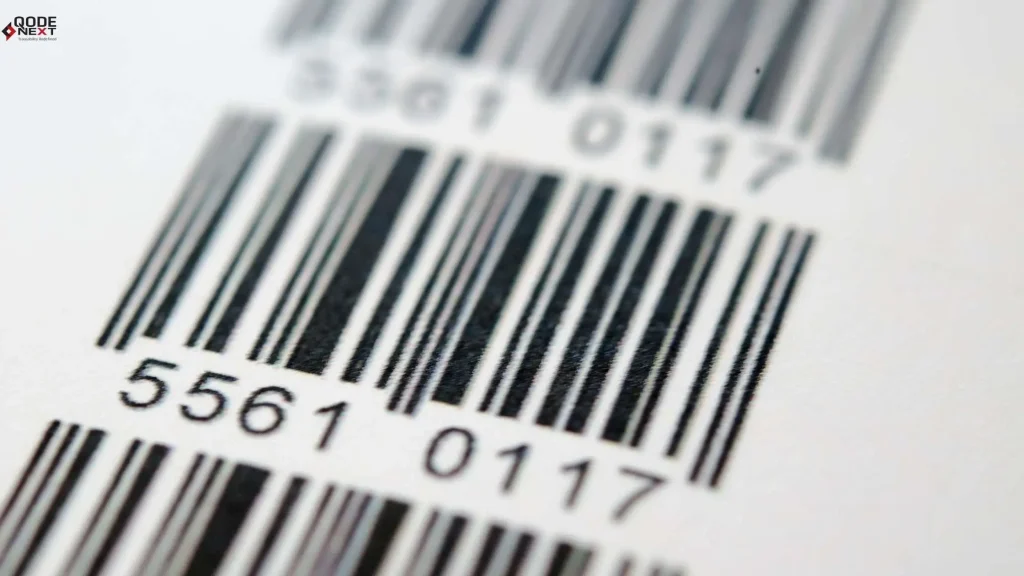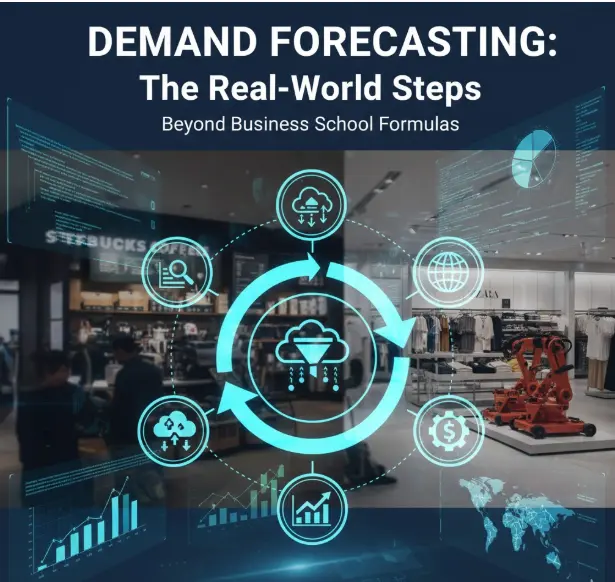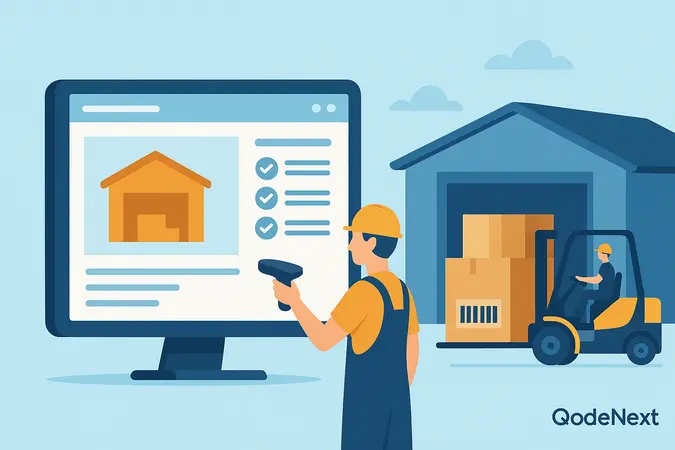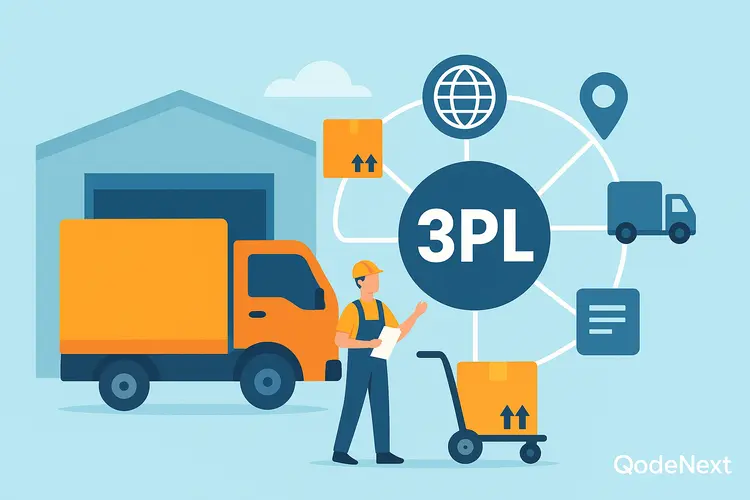In today’s fast-paced business world, two things are non-negotiable: Efficiency and Accuracy.
One technology that plays a key role in delivering both is barcode technology.
Whether it’s healthcare, retail, or logistics, barcodes and scanners have become essential tools for identification, tracking, and much more. But here’s the exciting part: barcode technology isn’t standing still.
It’s continuously evolving.
With advancements like Artificial Intelligence (AI) and Augmented Reality (AR) on the horizon, businesses are set to unlock new levels of operational excellence.
In this blog, we’ll dive into the future scope of barcode technology and explore how these innovations are poised to transform industries, offering game-changing benefits for businesses embracing these solutions.
Let’s get started.

What Is Barcode Technology?
Let’s begin with the basics of barcode scanning technology.
Barcodes are composed of vertical bars and spaces of varying widths, which encode a series of numbers or letters.
The application of barcode technology can prove to be beneficial store important data such as
- Product details
- Inventory codes
- Tracking identifiers
All of these are crucial for the efficient identification, tracking, and management of goods, assets, and information across industries.
A barcode scanner detects these patterns using a light source and transforms the data into a digital signal that is then processed by a computer.
With this foundational understanding of barcode scanning technology, let’s explore the advantages of barcode technology and how it enhances operational efficiency.
The future of barcode technology is marked by the adoption of advanced standards. For example, Data Matrix barcodes are gaining traction in industries like pharmaceuticals and electronics due to their high data density and error correction capabilities. If you want to understand why Data Matrix codes are becoming vital for compliance and traceability, see our guide on Data Matrix barcodes.
Advantages of Barcode Technology

When it comes to inventory management, barcode technology offers numerous advantages:
- Quick Scanning: Barcodes can be read rapidly, speeding up tasks like checkout and inventory management.
- Increased Accuracy: Scanning barcodes minimizes human error, ensuring that the correct product or data is captured each time.
- Cost Savings: Once implemented, barcode systems are economical to maintain and help reduce costs by enhancing efficiency.
- Better Organization: Barcodes make it easier to track products, inventory, or assets, improving overall organization.
- Instant Data Updates: Barcode scans immediately refresh information, enabling quick access to up-to-date data.
- Higher Productivity: With less manual effort required, employees can focus on more important tasks, boosting productivity.
With this said, let’s move on to the future scope of barcode technology in inventory management.
The Future Scope of Barcode Technology with AI
Today’s businesses are taking barcode technology a step further by integrating it with AI and IoT systems.
Imagine an inventory management system where IoT-enabled barcode scanners communicate seamlessly with connected devices.
These systems can provide:
- Real-time data, offering insights into inventory levels, product movement, and supply chain bottlenecks.
- This not only improves efficiency but it also encourages businesses to make decisions driven by data
AI plays a crucial role in this ecosystem by analyzing the data captured through barcodes.
For instance, AI algorithms can :
- Identify patterns
- Predict demand
- Optimize workflows
- Detecting anomalies
This level of automation improves operational efficiency, enhances decision-making, and even safeguards privacy by managing sensitive data more effectively.
Another key advancement is in barcode printing technology, which has become more sophisticated.
High-quality barcodes ensure accuracy in scans, which is crucial for systems that rely on real-time data. By reducing errors in printing and scanning, businesses can ensure smooth operations and minimize discrepancies in inventory counts.
The Benefits of Automation and Data Security
The integration of AI and IoT with barcode reader technology brings a new level of automation that improves operational efficiency across industries. This automation translates to:
- Reduced Human Error: Automated barcode scanning reduces the chances of mistakes in data entry or inventory tracking, ensuring accurate records and minimizing costly errors.
- Faster Decision-Making: With real-time data and AI-driven insights, businesses can make quicker, more informed decisions, whether it’s adjusting pricing, restocking products, or optimizing logistics.
- Enhanced Data Security: AI algorithms can safeguard sensitive information by monitoring for irregularities, ensuring that data privacy is maintained. This is particularly crucial in industries like healthcare and finance, where data breaches can have significant consequences.
AR in Barcode Scanning
AR in Barcode Scanning refers to the combination of Augmented Reality (AR) technology with barcode scanning systems to improve user experience and functionality. This approach allows users to scan barcodes with their smartphones or AR glasses. It overlays extra information directly onto the physical product or its packaging in real-time.
When a barcode is scanned, the AR system shows relevant details such as product descriptions, nutritional information, pricing, availability, and even user reviews. This interactive experience provides immediate access to valuable information and engages users by offering visual cues and animations that enhance the traditional scanning process.
Additionally, AR in barcode scanning can be used in various sectors, including retail, logistics, and inventory management. For example, warehouse workers can use AR to quickly identify products, manage stock levels, and improve operations. Consumers can enjoy a more informed shopping experience by accessing detailed product insights through their devices.
Overall, AR makes barcode scanning more intuitive, informative, and engaging. This leads to better efficiency and increased customer satisfaction.
How Barcode Technology Improves Supply Chains
Barcode technology has revolutionized supply chain operations by improving efficiency, accuracy, and visibility across logistics networks. Here’s how it enhances every stage of the process:
1. Improved Inventory Management
Barcodes enable real-time tracking of inventory levels. By scanning items, businesses can instantly update stock data, helping prevent both overstocking and stockouts. This ensures smoother operations and accurate demand forecasting.
2. Enhanced Data Accuracy
Manual data entry often results in errors. Barcode scanning eliminates these mistakes by automating data collection. This ensures inventory records remain precise and up to date, supporting better decision-making.
3. Faster Order Fulfilment
Barcode systems streamline the picking, packing, and shipping process. Workers can quickly locate and verify items through barcode scans, reducing order processing times and improving overall warehouse productivity.
4. Greater Supply Chain Visibility
Barcodes provide detailed information about each product’s journey — from origin to destination. This transparency helps track items throughout the supply chain, identify delays, and optimize logistics performance.
5. Reduced Operational Costs
By improving accuracy and efficiency, barcode systems minimize labor costs, errors, and excess inventory. These savings translate to higher profitability and better resource utilization.
6. Higher Customer Satisfaction
Accurate, timely deliveries directly improve customer satisfaction. Barcode technology ensures customers receive the correct products faster, leading to greater trust and repeat business.
7. Seamless Technology Integration
Barcode systems easily integrate with existing Warehouse Management Systems (WMS) and Enterprise Resource Planning (ERP) software. This compatibility allows for centralized, automated control over inventory and supply chain data.
FAQs: The Future Scope of Barcode Technology
1. How does IoT-enabled barcode technology work?
IoT-enabled barcode scanners connect with other devices in a network to provide real-time updates on inventory, product locations, and supply chain status.
2. Can mobile devices be used as barcode scanners?
Yes, modern smartphones can function as barcode scanners through dedicated apps that utilize their high-resolution cameras.
3. What are 2D barcodes, and how are they different from 1D barcodes?
2D barcodes, such as QR codes, can store much more information than traditional 1D barcodes. They can contain data like URLs, images, and documents, making them suitable for applications that require more complex information storage.
4. How will Artificial Intelligence (AI) further change barcode technology in the coming years?
AI will enable barcode systems to not only capture and process data but also analyze trends, predict demand, and automate decision-making. For example, AI-powered analytics can optimize inventory levels, detect anomalies in supply chains, and recommend corrective actions in real time. This will make barcode technology a proactive tool for business intelligence, not just a passive data capture method.
5. What role will Augmented Reality (AR) play in barcode scanning?
Augmented Reality (AR) will allow users to scan barcodes and instantly see interactive information overlays, such as product specs, user manuals, or promotional offers, directly on their device screens. This can enhance customer experience in retail and improve efficiency in warehouses by guiding workers to the correct products or providing step-by-step instructions. AR integration will make barcode scanning more intuitive, engaging, and informative.
6.How will barcode technology improve data security in the future?
Future barcode systems will use advanced encryption and authentication measures to protect sensitive data during scanning and transmission. AI-driven monitoring can detect suspicious activities or unauthorized access in real time, triggering alerts or automatic lockdowns. These enhancements will be vital for sectors handling confidential information, such as healthcare, finance, and government.
Conclusion
As businesses continue to adopt AI and IoT, the future scope of barcode technology extends beyond simple product identification. It’s transforming into a smart, interconnected tool that drives efficiency and innovation. From barcode printing technology to barcode reader technology, these advancements are shaping the future of supply chains, retail, and beyond.
In a rapidly evolving digital landscape, leveraging the power of AI, IoT, and advanced barcode systems can give businesses a competitive edge unlocking smarter, faster, and more secure ways to operate.






